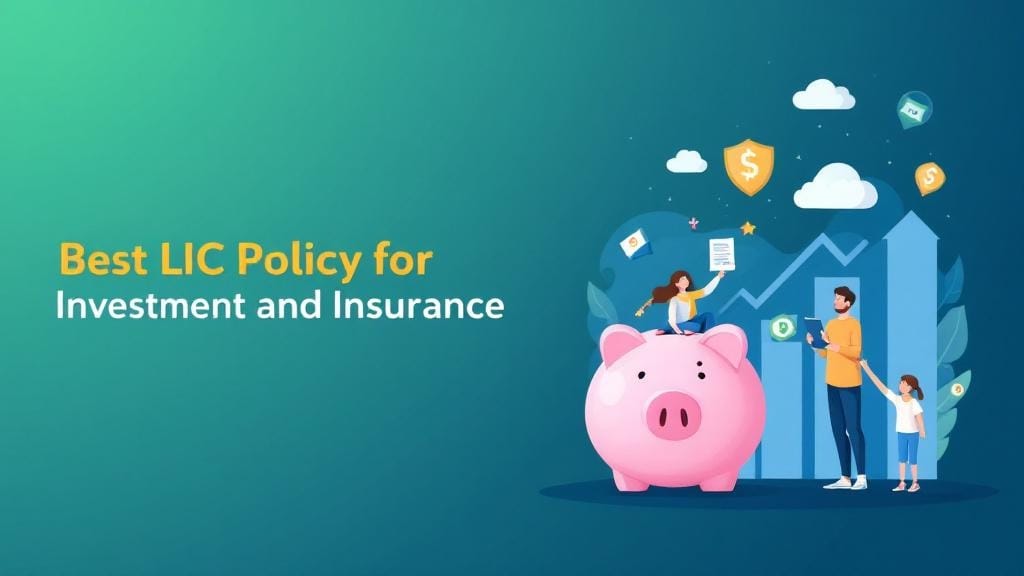As the workforce evolves and economic landscapes shift, the retirement options 2025 are set to transform in ways that could significantly impact your financial future. Did you know that nearly 65% of Americans are not confident that they will have enough savings to maintain their lifestyle in retirement? With changing policies, emerging investment opportunities, and technological advancements, it’s crucial to stay informed and proactive in your retirement planning. This blog post will explore the diverse range of retirement options available in 2025, equipping you with the knowledge needed to make strategic decisions and secure a comfortable future.
Understanding Retirement Options 2025
As we approach 2025, the landscape of retirement options is evolving dramatically. Understanding these shifts is crucial for effective planning. New trends and legislative adjustments are influencing how individuals save for retirement, making it essential to stay informed.
Key Trends Shaping Retirement Plans
- Increased Lifespan: People are living longer, which requires more substantial savings.
- Market Volatility: Economic fluctuations can impact investment portfolios.
- Technological Advancements: Digital tools are becoming necessary for managing retirement funds.
Traditional Retirement Accounts
Traditional retirement accounts remain foundational in retirement planning. The two most common types are 401(k) plans and Individual Retirement Accounts (IRAs).
401(k) Plans: Features and Benefits
- Employer Contributions: Many companies offer matching contributions, which can significantly boost your retirement savings.
- Tax Advantages: Contributions lower taxable income, providing immediate tax benefits.
Individual Retirement Accounts (IRAs): Types and Contributions
- Traditional IRA: Contributions may be tax-deductible, and taxes are paid upon withdrawal during retirement.
- Roth IRA: Contributions are made after-tax, allowing tax-free withdrawals in retirement.
Emerging Retirement Investment Vehicles
As we look toward retirement options 2025, new investment vehicles are gaining popularity.
Health Savings Accounts (HSAs) for Retirement
- Triple Tax Benefits: Contributions, interest, and withdrawals for qualified medical expenses are all tax-free.
- Long-Term Growth Potential: HSAs can be used as additional retirement savings vehicles.
Annuities: A Steady Income Stream
- Guaranteed Payments: Annuities provide a reliable income source, often for life.
- Variety of Options: There are different types of annuities (fixed, variable, indexed) to cater to diverse needs.
Social Security Changes and Considerations
Social Security plays a significant role in retirement planning. As of 2025, it’s important to consider the following:
Anticipated Adjustments to Benefits
- Cost-of-Living Adjustments (COLA): Keep an eye on potential increases due to inflation.
- Retirement Age Changes: Eligibility age adjustments could impact your planning.
Strategies for Maximizing Social Security
- Delayed Benefits: Planning to take Social Security benefits later can significantly increase monthly payments.
- Spousal Benefits: Understanding eligibility for spousal benefits can provide additional financial support.
For more comprehensive resources on retirement planning, consider exploring Fidelity Investments for expert insights and tools to help manage your retirement options for 2025.
Alternative Retirement Savings Strategies
In addition to traditional accounts, exploring alternative retirement savings strategies can enhance your financial security as you approach retirement. As we head into 2025, considering these options may provide more leverage for your overall plan.
Real Estate as a Retirement Investment
Investing in real estate can serve as a robust strategy for retirement savings. Here’s why:
- Tangible Asset: Real estate provides a physical asset that can appreciate over time.
- Rental Income: Property can generate a consistent income stream, particularly in retirement.
- Tax Benefits: Property owners may enjoy tax deductions related to mortgage interest and property taxes.
Diversifying with Stocks and Bonds
A diversified portfolio that includes stocks and bonds is vital for balancing risk and growth.
- Stocks: Historically, stocks have offered higher returns over the long term, which can significantly boost retirement accounts.
- Bonds: Incorporating bonds can provide stability to your portfolio, especially during economic downturns.
Investors should stay informed about market conditions to optimize their portfolios effectively.
State-Sponsored Retirement Plans
State-sponsored retirement plans are gaining traction, especially for individuals who may not have access to employer-sponsored options. As we look ahead to retirement options 2025, it’s essential to understand these offerings.
Overview of Public Retirement Options
- Automatic Enrollment: Many state plans implement automatic enrollment to increase participation rates.
- Lower Fees: State-sponsored plans often have lower fees compared to private investment options.
Pros and Cons of State Plans
- Pros:
- Accessibility for all workers, including those in gig or freelance economies.
- Simplicity and transparency in management.
- Cons:
- Limited investment choices compared to private retirement accounts.
- May not offer the same tax advantages as other retirement accounts.
For a deeper understanding of state retirement initiatives, you can visit AARP’s website for comprehensive resources and information.
Employer-Sponsored Retirement Programs
Employer-sponsored retirement programs continue to be a vital source of funding for individuals preparing for retirement. Understanding the various options available through employers can greatly enhance your retirement strategies as we look toward 2025.
Understanding Pension Plans and Their Relevance
Pension plans, while less common today, offer a guaranteed income during retirement based on a formula that considers salary and years of service. Here are key points regarding pension plans:
- Defined Benefit Plans: Employers promise a specified monthly benefit upon retirement.
- Stability: Provides a predictable income source, making budgeting easier for retirees.
Exploring Employer Matching Contributions
Employer matching contributions can significantly amplify your retirement savings. Here’s how these usually work:
- Contribution Matching: Employers match a percentage of employee contributions, effectively providing “free money” for retirement.
- Immediate Impact: This can lead to substantial increases in personal savings over time.
To maximize employer-sponsored retirement options, consider these actions:
- Enroll Early: Take advantage of any available matching contributions as soon as you are eligible.
- Increase Contributions: Aim to contribute at least enough to receive the full match from your employer.
For more insights on how to effectively utilize employer-sponsored retirement programs, you can check out Vanguard’s resources for up-to-date information and strategies tailored to your financial goals.
The Role of Financial Advisors in Retirement Planning
Navigating the complexities of retirement options 2025 can be challenging without professional guidance. Financial advisors play a critical role in helping individuals make informed decisions about their retirement planning.
Choosing the Right Financial Advisor
When seeking a financial advisor, consider the following factors to ensure you find a suitable match:
- Qualifications and Credentials: Look for certified professionals, such as Certified Financial Planners (CFPs), who have undergone rigorous training and examinations.
- Experience: Consider advisors with a solid track record in retirement planning specifically, as knowledge in this arena is invaluable.
- Fee Structure: Understand how the advisor is compensated—whether through commissions, fees, or a combination. This can affect the recommendations they provide.
Key Questions to Ask
When interviewing potential financial advisors, ask the following questions to gauge their suitability for your needs:
- What is your approach to retirement planning? This will give you insight into their philosophy and methodology.
- How often will we review my retirement plan? Regular check-ins ensure your plan stays aligned with changing circumstances.
- Can you provide examples of how you’ve helped clients achieve their retirement goals? Real-world experience is a positive indicator of their capabilities.
A knowledgeable financial advisor can help craft a personalized retirement strategy tailored to your goals, risk tolerance, and timeline. For extensive resources and tools, you can visit Charles Schwab’s website to explore how professional guidance can enhance your financial planning.
Key Takeaways for Securing Your Retirement Future
As we approach 2025, it’s essential to have a clear plan that incorporates a variety of retirement options. Understanding these different avenues can significantly influence your financial security in retirement.
Action Steps for Choosing the Best Retirement Options
To begin shaping your retirement strategy, consider taking the following steps:
- Assess Your Current Financial Situation: Evaluate your assets, liabilities, and current savings to understand your starting point.
- Set Clear Retirement Goals: Determine the lifestyle you want in retirement, including travel, leisure, and basic living expenses.
- Explore Various Options: Research and consider a combination of traditional and alternative retirement savings options discussed throughout this blog.
Resources for Ongoing Education and Support
Continuous learning and staying informed about retirement strategies are crucial for effective planning. Key resources include:
- Financial Education Websites: Sites like NerdWallet offer comprehensive advice on financial planning and retirement strategies tailored for various financial situations.
- Retirement Planning Workshops: Many financial institutions and community organizations offer workshops designed to educate about retirement strategies.
In conclusion, navigating retirement options 2025 requires proactive planning, a diversified approach, and the right resources. By taking these steps, you can work towards securing your financial future and achieving peace of mind in retirement.
Conclusion: Preparing for a Secure Retirement in 2025
As we approach 2025, the importance of planning for retirement cannot be overstated. The variety of retirement options available presents both opportunities and challenges for individuals looking to secure their financial future.
Understanding the Landscape of Retirement Options
- Dynamic Environment: Retirement options are influenced by changing laws, economic conditions, and personal financial needs.
- Personalization: Each individual’s journey is unique; tailor your retirement strategy to fit your own goals and lifestyle.
Strategies for Success
To effectively navigate retirement planning, consider the following strategies:
- Stay Informed: Regularly update yourself on new retirement options 2025, as markets and policies evolve.
- Utilize Multiple Avenues: Don’t rely solely on one type of retirement account; diversify your investments for increased security.
- Engage Professionals: Seek the expertise of financial advisors to craft a comprehensive retirement plan tailored to your objectives.
Taking proactive actions today can lead to a more secure and fulfilling retirement. For additional information on retirement planning and resources, you can visit Morningstar, which offers valuable insights and analytics designed to guide investors.
By embracing the right strategies and utilizing diverse retirement options, you can pave the way to a brighter financial future.
The Future of Retirement Planning: Anticipating Changes for 2025
As we prepare for the shifts in retirement options 2025, it’s crucial to anticipate the trends and changes that could shape your financial future. Understanding upcoming developments in retirement planning can help you stay ahead of the curve.
Anticipated Legislative Changes
- Increased Contribution Limits: Future legislation may allow higher contribution limits for retirement accounts, enabling individuals to save more.
- Changes to Social Security: Potential adjustments to Social Security benefits could impact the amount retirees receive, making it essential to plan accordingly.
Technological Innovations in Retirement Planning
- Robo-Advisors: Automated investment platforms are likely to become more prevalent, offering low-cost, personalized financial advice based on algorithms.
- Retirement Planning Apps: New tools are emerging, making it easier to track savings, investments, and retirement readiness in real-time through user-friendly interfaces.
The Growing Importance of Sustainable Investing
- ESG Investments: Environmental, social, and governance (ESG) investments are becoming increasingly popular among retirees who wish to align their portfolios with their values.
- Impact on Financial Performance: Research suggests that companies with strong ESG commitments can outperform their peers, making sustainable investing an attractive option for retirement portfolios.
For those looking to stay informed about these emerging trends and how they relate to retirement options 2025, companies like BlackRock offer valuable insights and resources. By staying ahead of trends and embracing new technologies, you can craft a retirement plan that not only meets your needs but also adapts to a changing landscape.
Understanding the Impact of Economic Trends on Retirement Options
As we look toward 2025, various economic trends will influence retirement options and individuals’ financial strategies. Being aware of these trends can better prepare you for effective retirement planning.
Inflation and Its Effects
- Rising Costs: Inflation can erode purchasing power, making it crucial for retirement plans to account for rising living costs.
- Investment Strategies: Consider investments that historically outpace inflation, such as stocks or real estate, to preserve the value of your retirement savings.
Employment Shifts and Their Implications
- Gig Economy Growth: The rise of gig work means more individuals may lack employer-sponsored retirement plans, emphasizing the need for self-directed saving strategies.
- Retirement Savings Initiatives: More businesses may adopt retirement plans to attract workers in this competitive landscape, providing additional options for savings.
Market Volatility and Diversification
- Economic Fluctuations: Frequent market changes make diversification paramount in your retirement portfolio.
- Balanced Investment Approach: Incorporate a mix of stocks, bonds, and alternative investments to reduce risk and ensure stable growth.
For ongoing insights into how economic trends can influence retirement options 2025, you can visit Bloomberg, which provides expert analysis on economic developments and their implications for investors. By adapting your retirement strategies to these trends, you can enhance your financial security in the years to come.
Maximizing Your Retirement Savings: Practical Tips for 2025
As we approach 2025, exploring ways to maximize your retirement savings becomes increasingly important. With various retirement options available, implementing proactive strategies can significantly impact your financial future.
Establishing a Savings Plan
- Set Specific Goals: Define how much you need to save for retirement and set clear, achievable milestones.
- Automate Savings: Consider setting up automatic transfers to your retirement accounts to ensure consistent contributions.
Taking Advantage of Tax Benefits
- Contribute to Tax-Advantaged Accounts: Utilize pre-tax accounts like 401(k)s and Traditional IRAs to reduce your taxable income.
- Roth Accounts: Consider contributing to a Roth IRA, where withdrawals in retirement can be tax-free, which is particularly beneficial as tax rates may increase in the future.
Utilizing Employer Matching Contributions
- Maximize Your Employer Match: If your employer offers a matching contribution program, aim to contribute at least enough to receive the full match—this is essentially free money for your retirement savings.
Diversification and Investment Strategies
- Invest Wisely: Diversifying your portfolio among stocks, bonds, and other asset classes can reduce risk and enhance returns over time.
- Rebalance Regularly: Periodically review and adjust your investment allocations to stay aligned with your risk tolerance and retirement timeline.
For more in-depth resources on maximizing your retirement savings and understanding the best practices, visit Fidelity Investments. Their tools and insights can guide you in making informed financial decisions as you explore various retirement options for 2025. By taking these proactive steps today, you can build a solid foundation for a financially secure retirement.
What are the primary retirement options available in 2025?
In 2025, major retirement options include traditional accounts like 401(k) plans and IRAs, as well as emerging vehicles such as Health Savings Accounts (HSAs) and annuities. Additionally, state-sponsored retirement plans are gaining traction, providing more avenues for individuals who may not have access to employer-sponsored options.
How can I maximize my retirement savings?
Maximizing your retirement savings involves setting specific goals, automating contributions to retirement accounts, and taking full advantage of employer matching contributions. You should also consider utilizing tax-advantaged accounts and diversifying your investments to mitigate risk and enhance potential growth.
What changes can we expect in Social Security benefits by 2025?
By 2025, potential adjustments to Social Security benefits may occur, influenced by factors such as inflation and changes in retirement age. Staying informed about these developments is crucial, as they can impact the amount you receive and ultimately affect your overall retirement funding strategy.
Are there new technologies influencing retirement planning in 2025?
Yes, technological advancements are playing a significant role in retirement planning for 2025. Tools like robo-advisors and retirement planning apps are emerging, making it easier for individuals to track their savings, investments, and overall readiness for retirement. These innovations provide more accessible financial guidance tailored to your specific needs.
Should I consider consulting a financial advisor for my retirement planning?
Consulting a financial advisor is highly recommended as you plan for retirement. Financial advisors possess the expertise to help you navigate the complexities of retirement options in 2025, create a personalized strategy tailored to your financial goals, and provide ongoing support to adapt your plan as your circumstances change.








Comments (0)